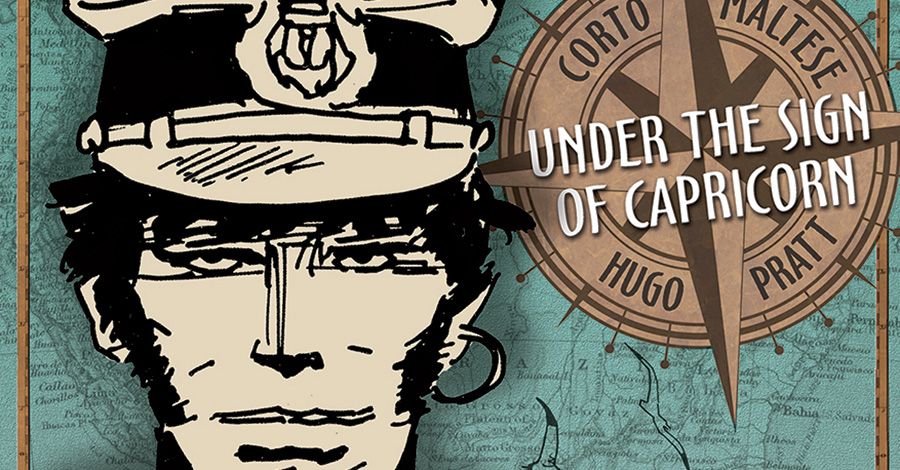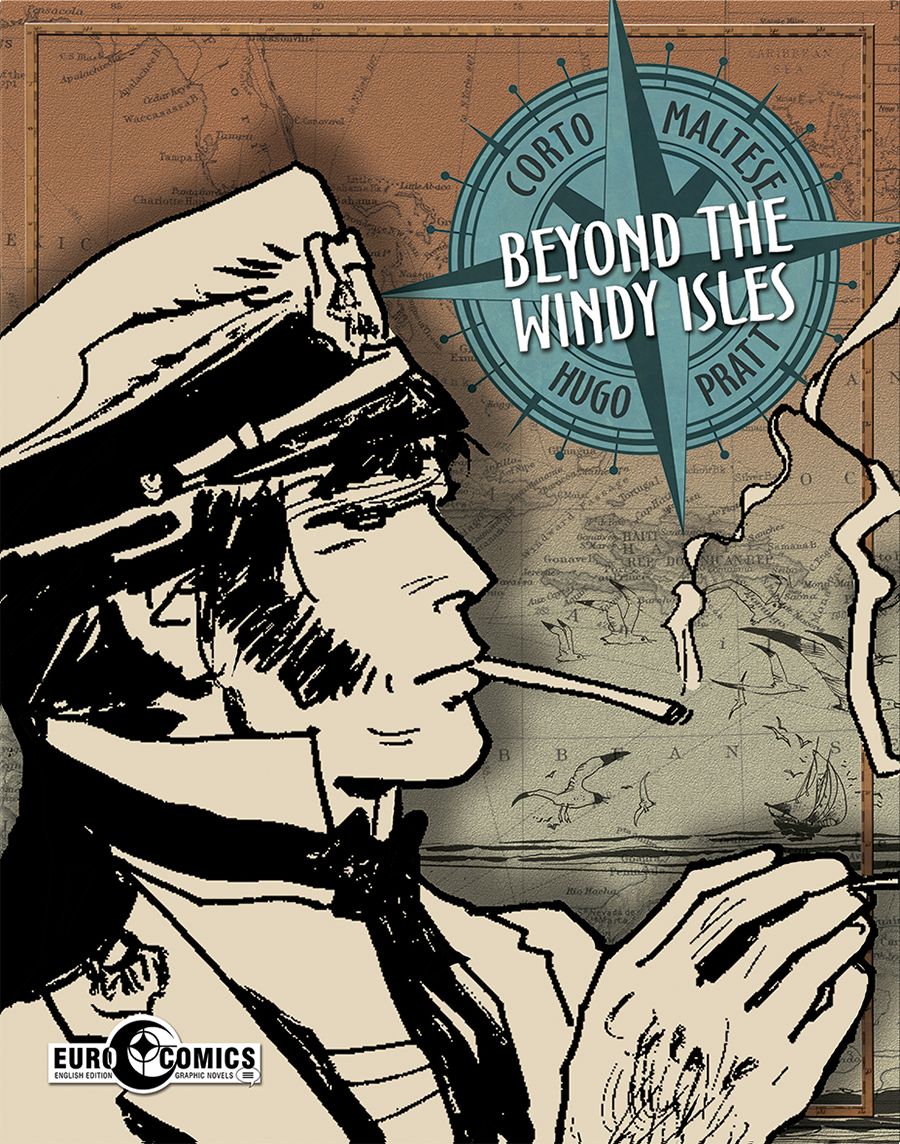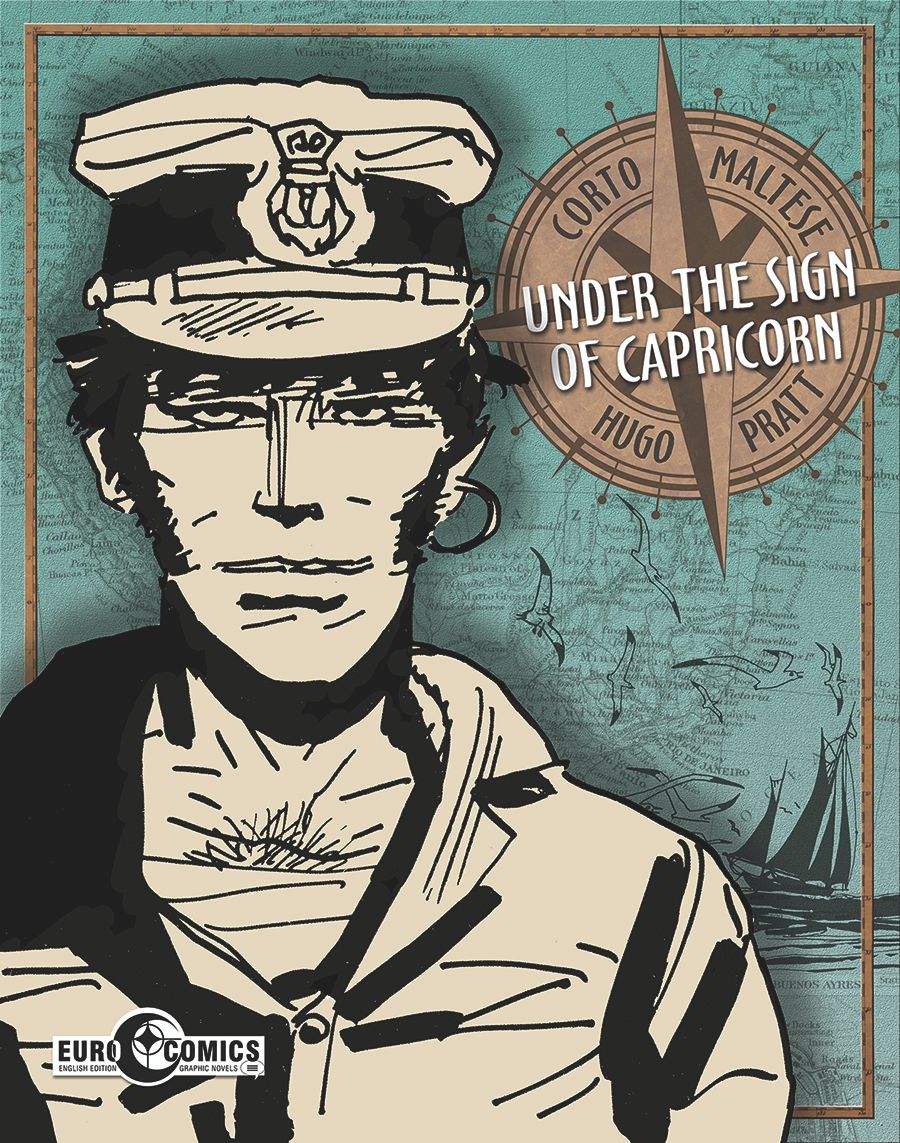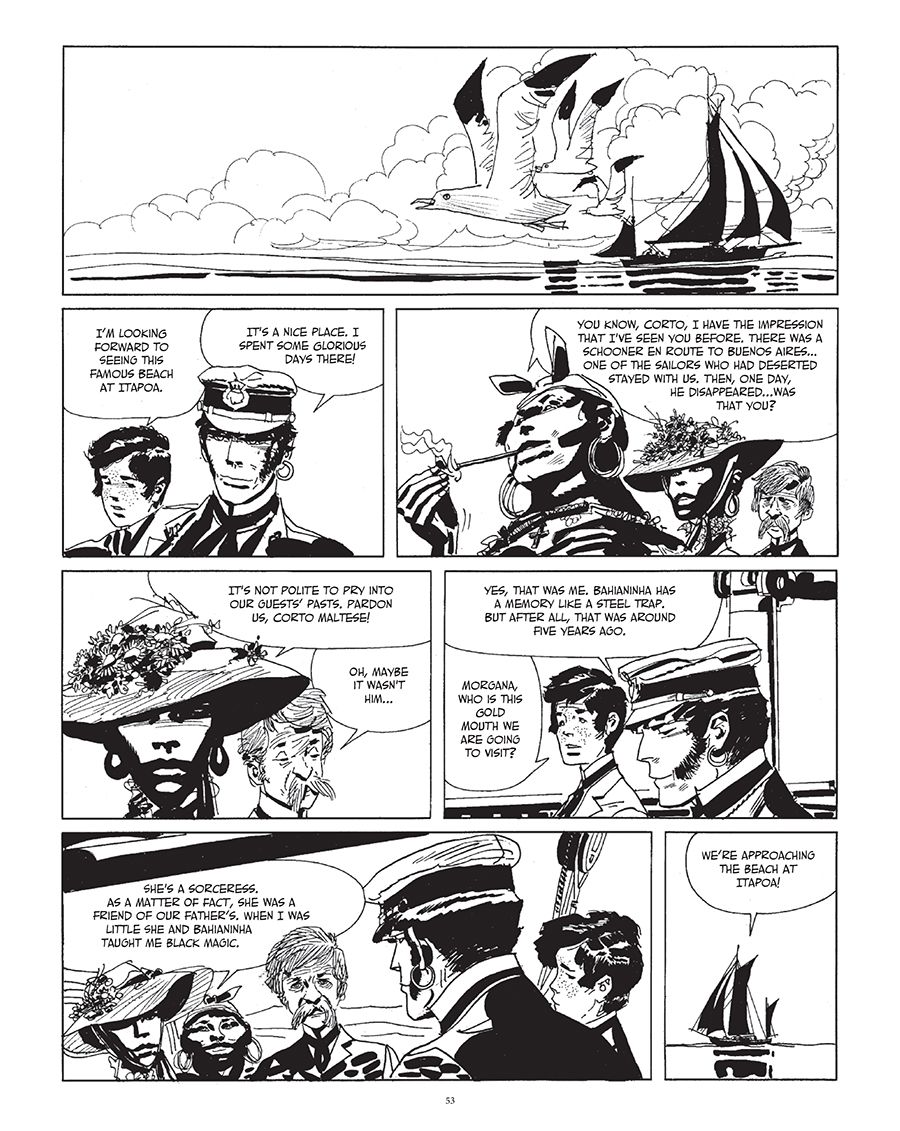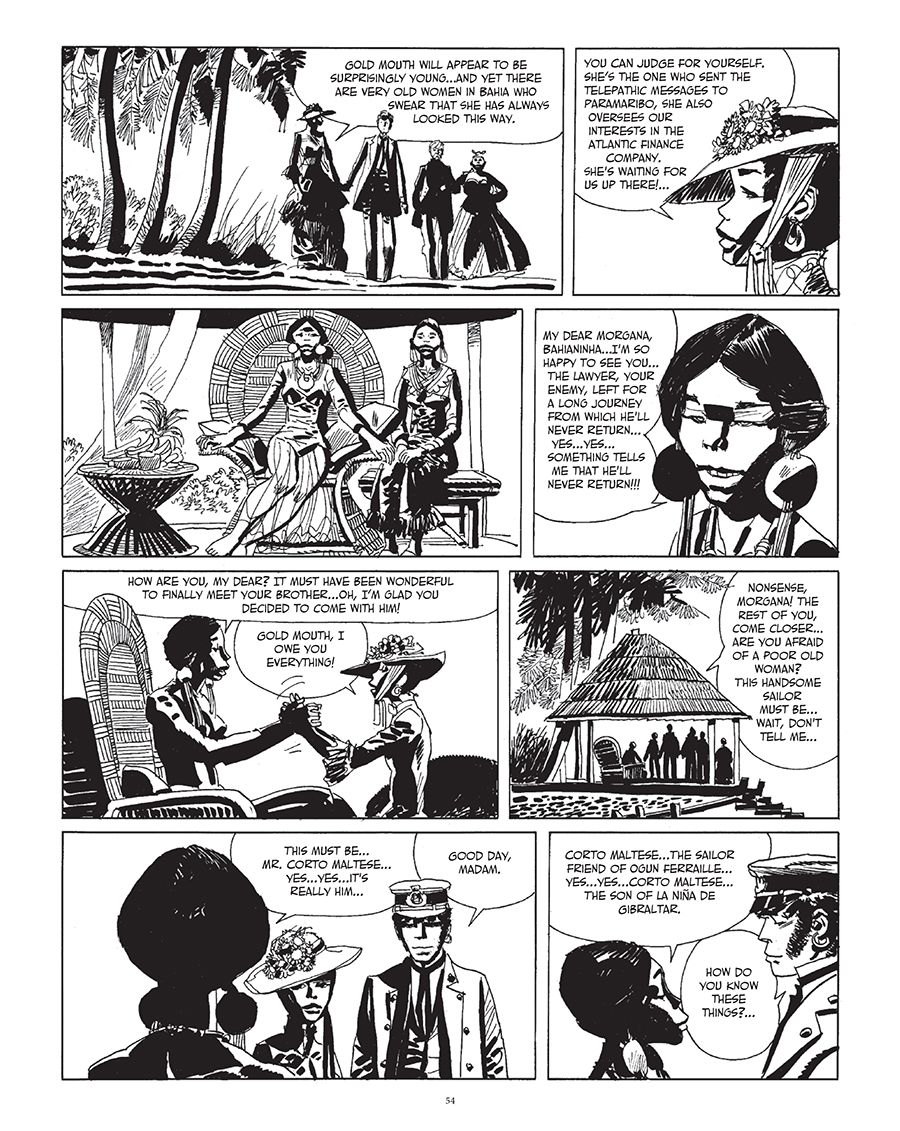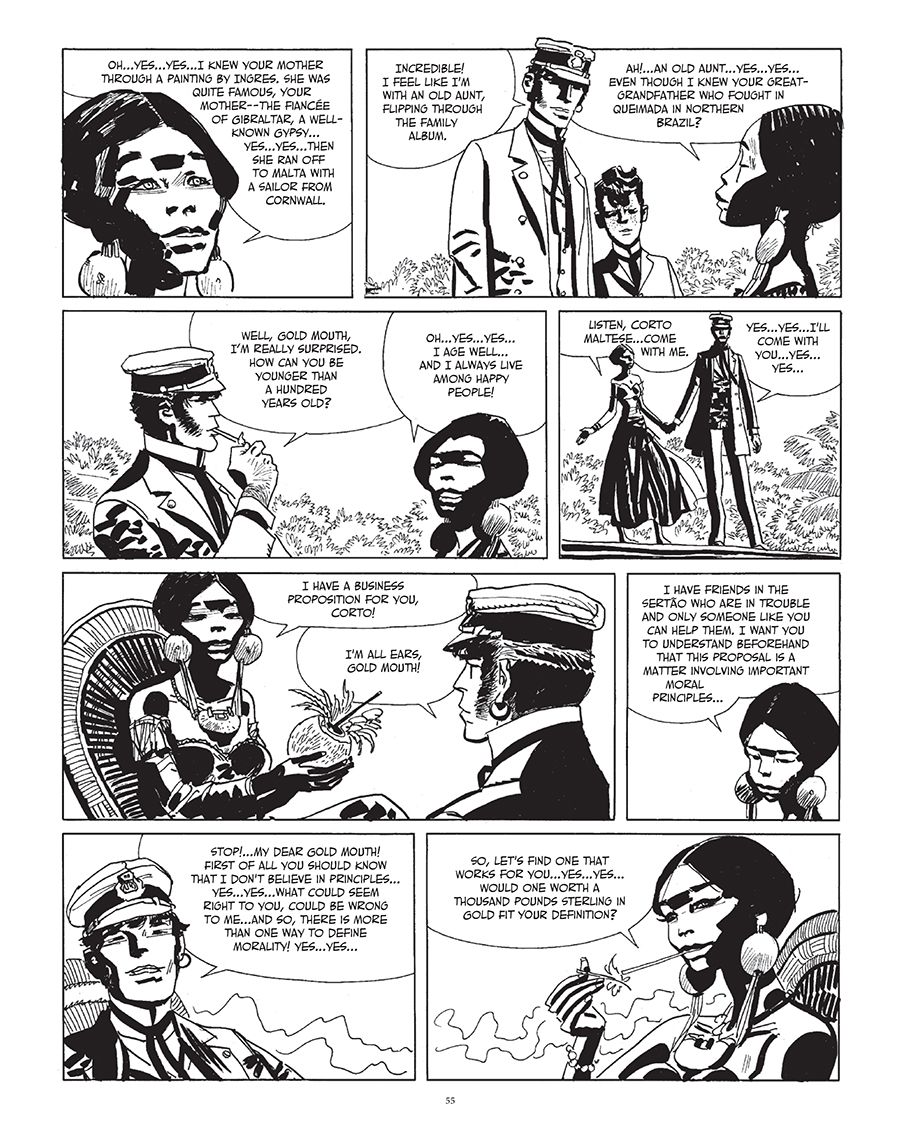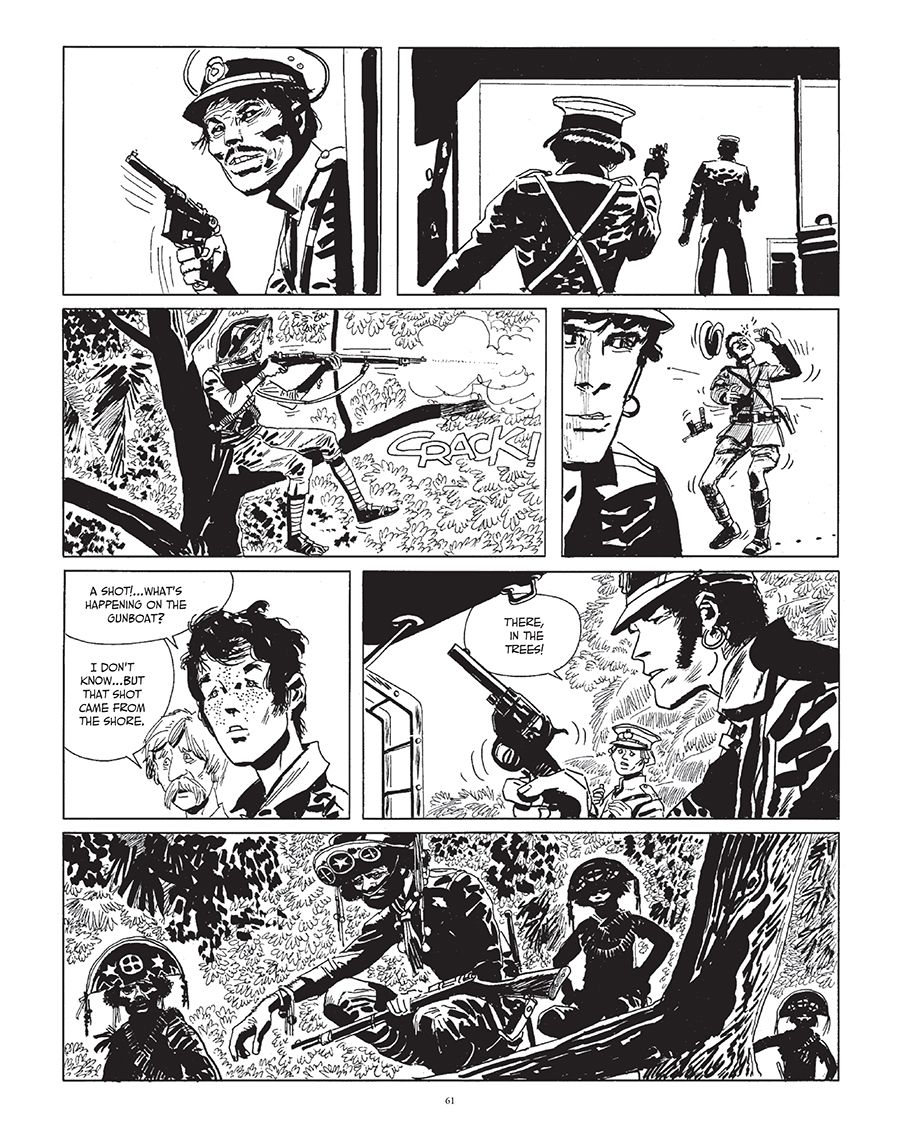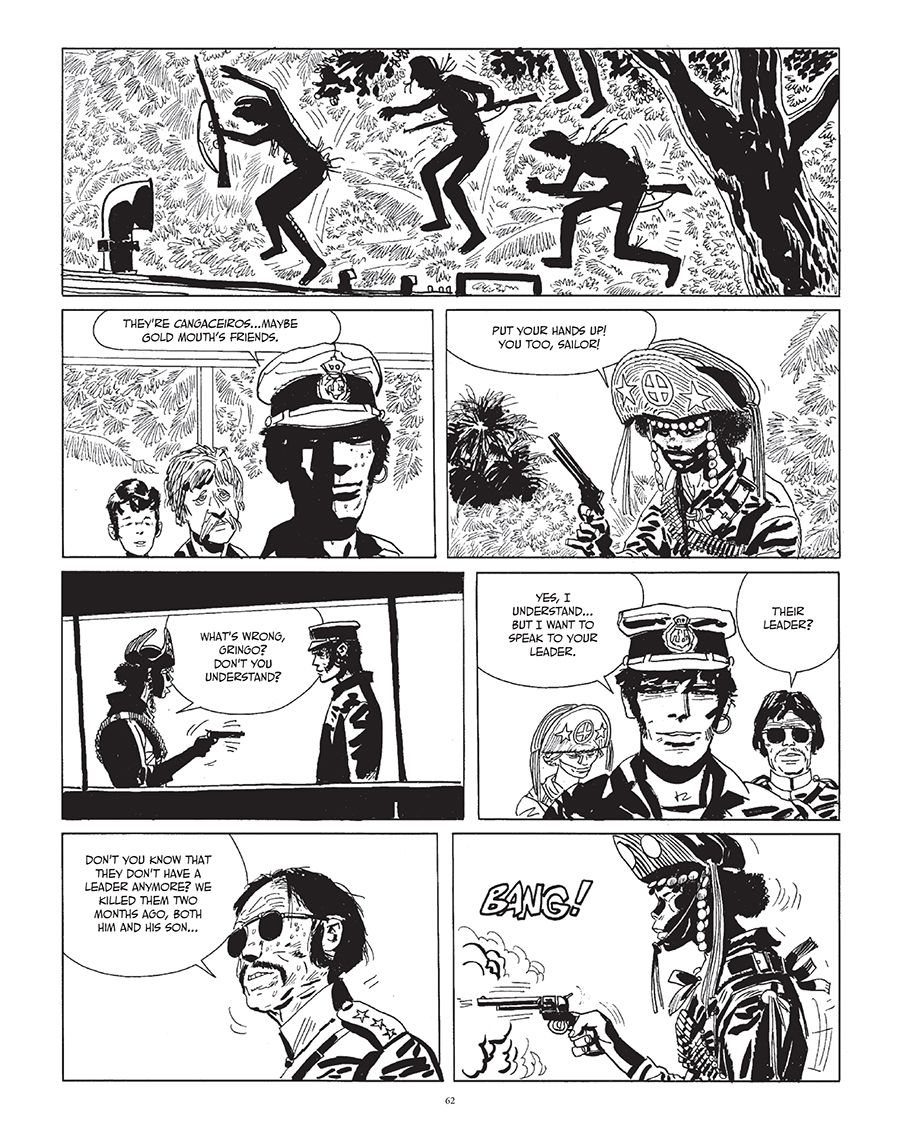In 1967, Italian comics artist Hugo Pratt (1927-1995) published "Corto Maltese: Ballad of the Salty Sea," introducing audiences to his globe-hopping, sea-faring protagonist. Pratt continued writing and illustrating Corto's tales until 1989, when his final adventure "Mu" was completed. All together, 29 "Corto" stories thrilled readers all across the world, though rarely in on this side of the Atlantic Ocean where "Corto" received only one concerted translation effort -- in the late-1980s from NBM -- and has been out of print for a quarter century.
Corto Maltese traveled the world over. From the south Pacific during World War I to the Russian civil war in the aftermath of the October Revolution, he participated, sometimes tangentially, sometimes directly, in many of the early 20th Century's most charged moments. In addition to meeting Ernest Hemingway, Joseph Conrad, Butch Cassidy and many other historical figures, he also traveled to lost continents and encountered Merlin. For Pratt, nothing was off-limits for Corto if the story was strong. Pratt even crafted a clear timeline of Corto Maltese's life, charting his journey from "The Early Year" in 1905 to "Mu" in 1925.
Pratt's striking artwork made such an impression on Frank Miller that Miller named a fictional South American nation in his seminal "Dark Knight Returns" after Pratt's most famous creation. Miller's homage was picked up for the 1989 Batman film -- "I've seen your photographs from Corto Maltese -- You've got an extraordinary eye." -- and in episodes of "Arrow" and "Smallville."
For his influential work, including "Corto Maltese," Hugo Pratt was inducted into the Will Eisner Hall of Fame in 2005. Oh, and a watercolor of Corto recently sold for almost half a million dollars.
RELATED: Hugo Pratt Watercolor Fetches Record Price for Corto Maltese Art
And now, finally, Pratt and "Corto Maltese" are returning to the U.S. in a big way. Building on the success of the Library of American Comics and their archival reproductions of classic newspaper comic strips (including Eisner Award-winners "Terry and the Pirates" and the "Alex Toth: Genius" series), editor Dean Mullaney and IDW Publishing are introducing EuroComics, a line that promises to translate and publish the finest comics from Europe's most influential creators.
EuroComics is starting with Hugo Pratt, and CBR News spoke with Editor Dean Mullaney about the Italian master and importing Pratt to American audiences.
CBR News: Dean, you've made the Library of American Comics (LOAC) into a tremendous success. Why branch into European comics now and why start with Pratt?
Dean Mullaney: Great comics are great comics, regardless of where or when they were created. LOAC takes care of the "when." EuroComics will address the "where." Those who remember my days at Eclipse Comics will recall that I oversaw a wide spectrum of comics -- from "Miracleman" to Craig Russell's opera comics, from the first line of Japanese manga in English translation to Giant-Sized Mini-Comics, from "Krazy Kat" to Scott McCloud's "Zot!." Given the greater respect comics and graphic novels are afforded these days, I think it's a good time for us to branch out, and fortunately for all of us, Ted Adams and IDW agrees!
Why start with Hugo Pratt? Simply because Pratt is one of the greatest graphic novelists in the history of comics. And the English-speaking world needs to see and enjoy his comics.
What is the publishing schedule for "Corto"?
We're going to release three books per year, so that -- finally! -- the complete "Corto" will be in print within three years. We're starting with the short stories Pratt created in the early '70s, in which he developed so many of the themes and characters that continue through the rest of the series. The action takes place in 1916-1917. Technically, it's the third book in the series. We'll move forward from there through Corto's life: "Celtic Tales" and "The Ethiopian" in 1918, "Corto Maltese in Siberia" in 1919-1920, etc., until we reach the final book "Mu" in 1924-1925. Then we'll double-back and publish "The Early Years" (1905) and finally "The Ballad of the Salty Sea" (1913).
Are these entirely new translations? Who's handling the English scripts?
Totally new translations made from Hugo Pratt's original Italian scripts. Although most of the "Corto" stories were first published in France, Pratt always wrote in his native Italian. The 1980s English-language editions were third-hand translations made from French editions, which in turn were interpretations by French editors from the Italian. By going back to Pratt's original scripts, we are able to capture the nuances in his language. Pratt was incredibly well-traveled and well-read and his stories contain innumerable references to fascinating events in real as well as fictional history.
The raw, literal translations are done by Simone Castaldi, associate professor of Romance Languages and Literature at Hofstra and the author of "Drawn and Dangerous: Italian Comics of the 1970s and 1980s." He grew up in Italy reading Pratt and has a great feel and understanding of Italian idiom.
I edit and rework the literal translations so they read smoothly in English. Some elements translate straightforwardly, but in many cases, it takes concentrated interpretation because Pratt writes a complicated narrative. In addition, the romance languages have idiosyncrasies that don't necessarily read smoothly in English. For example, they make great use of repeated phrases for impact. I've left some of that but not overmuch; otherwise it would interfere with a native English speaker's reading.
"The Ballad of the Salt Sea" was recently published in English by Universe, a division of the Italian publisher Rizzoli, and heavily criticized for a variety of production problems, including cropped panels and rearranged pages. How are you approaching the production and the European album format?
It's unfortunate that Rizzoli got so reamed for that edition. They've published Pratt in Italy forever, in various sizes and formats, color and black-and-white -- and done a great job at it. But I think they misunderstood the American market. While Europeans are used to seeing "Corto" in all those different sizes and formats, Europeans have also seen the original "Corto" in B&W, the way Pratt created it. So what we need in America is to first present "Corto" in its original format. That's what we're doing with EuroComics -- reproducing the B&W in the original oversized format. Will there be a market for color editions down the line? Possibly, but not at this time. And, for the record, the title of Pratt's masterpiece is "Ballad of the Salty Sea," not "Salt Sea."
With the exception of he recent "Salty Sea" volume, "Corto Maltese" hasn't been published in English since NBM put the books out in the late 1980s. While manga has made considerable inroads in the states, many European comics giants (except perhaps Herge's "Tintin" and Goscinny & Uderzo's "Asterix," and more recent works from a small handful of cartoonists like Marjane Satrapi) have failed to remain in print. Any theories as to why that is?
That's a good question and I don't know if anyone has a studied answer. One reason manga gained such a strong foothold may be because Japanese publishers themselves entered the U.S. market in order to present their work. When Viz started, it was as a co-publishing venture with Eclipse; the Japanese publishers didn't understand the American market and wanted a domestic partner. I knew going into it that it was a temporary marriage of convenience. Sales on those early Viz comics were modest, but they were willing to spend whatever amount of money it took to establish a market.
European publishers haven't taken a similar step. And I'm not saying that they should. There hasn't been a concentrated program to introduce European comics to the U.S. Instead, they've relied on traditional foreign licensing to whatever U.S. publishers were interested.
Part of the issue may also be that, in general, there's a lot more sex and nudity in European comics than in American comics.
I know many of the LOAC strips are titles you've wanted to present properly for many, many years, often going back to your days with Eclipse. Has finding the time and opportunity to present "Corto" been a similar wait? With the books being so rarely in-print here in the U.S., how did you discover Hugo Pratt and "Corto Maltese"?
I first discovered Hugo Pratt and "Corto" in the French graphic albums (as they were then called) in late 1970s. I was looking at everything and anything to find a format for Eclipse's first publication, the graphic novel "Sabre." I cobbled my way through the text with what remained of my high-school French, but it was the art specifically that blew me away. I tried getting the rights in the early '80s but for one reason or another, it didn't work out. So here we are 30 years later and I can put a check mark next to "Corto Maltese," just as I was able to put one next to "Terry and the Pirates." I gotta say -- it feels damn good.
Some people say, "Things happen for a reason." If that's true, then the reason I didn't get the rights to "Corto" in the early '80s was because, with 30 more years of experience under my belt, I can do a much better service to Hugo Pratt today.
What's next for EuroComics? Please tell me it involves Moebius and Lt. Blueberry.
We're in negotiations for several series but I don't want to say anything specific until contracts are signed.

